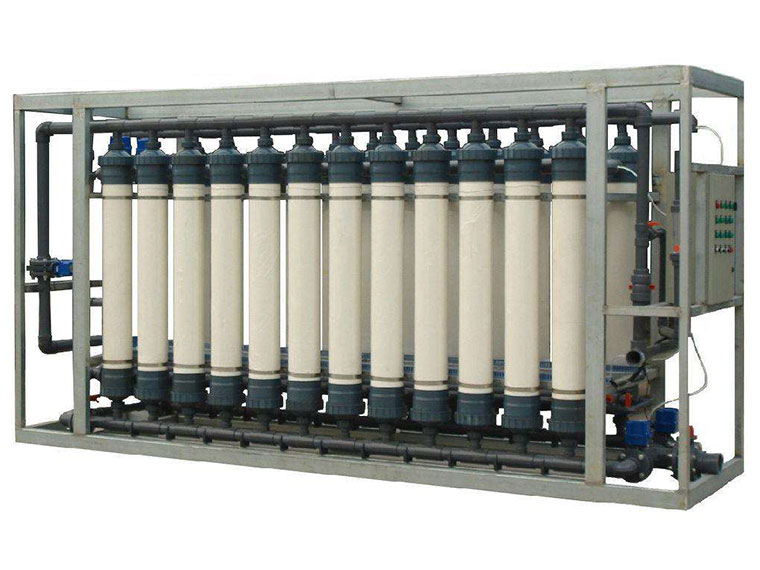Product Details
Ultrafiltration is one of the membrane separation technologies driven by pressure. For the purpose of separating large and small molecules, the membrane pore size is between 20-1000A°. Hollow fiber ultrafilter (membrane) has the advantages of high filling density per unit container and small footprint.
product description
In the ultrafiltration process, the aqueous solution flows through the membrane surface under the pressure of the membrane. The solvent (water) and small molecule solute permeable membranes that are smaller than the membrane pores become the purification liquid (filtration liquid), and the solute and solute group that are larger than the membrane pores It is trapped and discharged with the water flow to become a concentrated solution. The ultrafiltration process is dynamic filtration, and the separation is completed in a flowing state. The solute is only deposited on the membrane surface, the ultrafiltration rate is attenuated to a certain extent and tends to balance, and can be recovered by cleaning.
Ultrafiltration is a pressurized membrane separation technology, that is, under a certain pressure, small molecular solutes and solvents are passed through a special membrane with a certain pore size, so that large molecular solutes are impermeable and left on the side of the membrane, so that The macromolecular material was partially purified. Ultrafiltration is one of the membrane separation technologies driven by pressure. For the purpose of separating large and small molecules
The origin of ultrafiltration was in 1748. Schmidt used cotton glue membrane or lu membrane to filter the solution. When a certain pressure was applied, the solution (water) penetrated the membrane, and proteins, colloids and other substances were intercepted. The filtration accuracy was far beyond Filter paper, so he proposed the term ultrafiltration. In 1896, Martin produced the first artificial ultrafiltration membrane. In the 1960s, the concept of molecular weight grade was proposed, which was the beginning of modern ultrafiltration. It was in the 1970s and 1980s. During the period of rapid development, it began to mature after the 1990s. my country's research on this technology is relatively late. It was still in the research period in the 1970s, and only entered the stage of industrialized production and application in the late 1980s.
The ultrafiltration device is similar to the reverse osmosis device, and has a plate type, a tube type (inner pressure tube and outer pressure tube bundle type), a coil type, and a hollow fiber type. Concentration polarization is a natural phenomenon in the membrane separation process. How to reduce this phenomenon to a minimum is one of the important topics of ultrafiltration technology. The measures taken are: ① Increase the water flow rate on the membrane surface to reduce the thickness of the boundary layer and make the trapped solute be taken away by the water in time; ② Take physical or chemical washing measures.
definition
Ultrafiltration is a new technology of hollow fiber filtration, combined with three-stage pretreatment filtration to remove impurities in tap water; ultrafiltration pores are less than 0.01 microns, which can completely remove bacteria, rust, colloids and other harmful substances in the water, retaining the original trace of water Elements and minerals.
We insist on being customer-centric, quickly respond to customer needs, and continue to create long-term value for customers to achieve customer success. To provide effective services to customers is the yardstick of our work direction and value evaluation. To achieve customers is to achieve ourselves.




